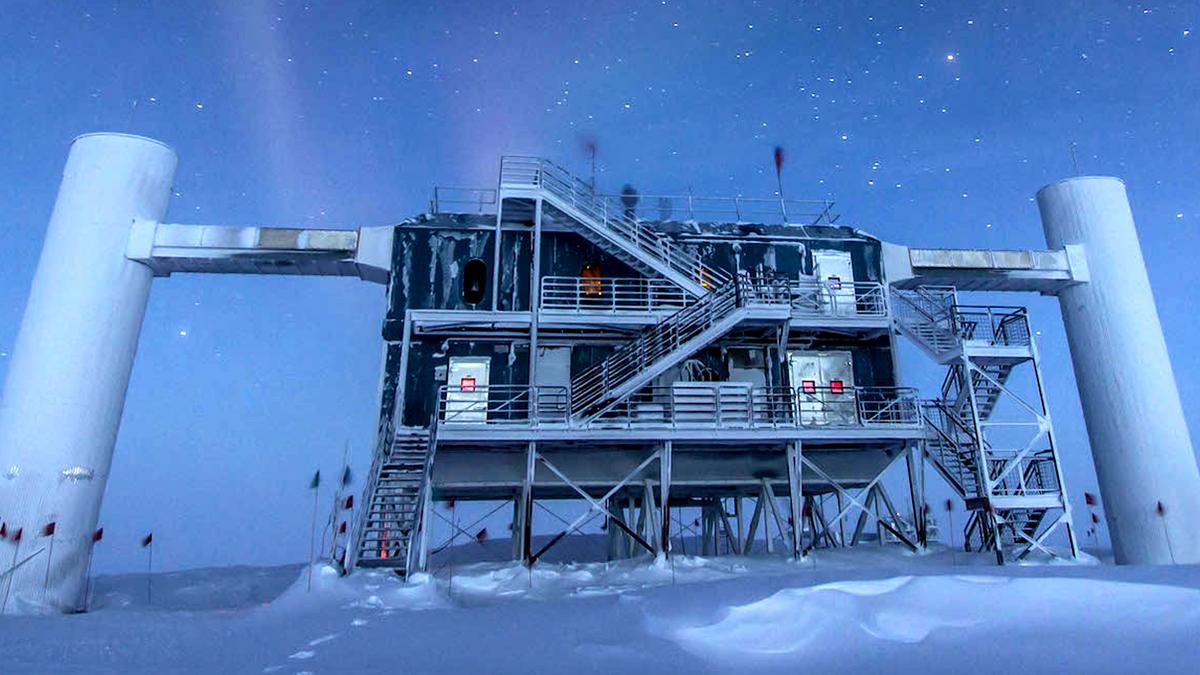
What is it? IceCube: The big, chill neutrino-spotter
The Hindu
What is it? IceCube: The big, chill neutrino-spotter
The IceCube neutrino observatory is a device at the Earth’s South Pole that detects subatomic particles called neutrinos. It was built and is maintained by the IceCube Collaboration, which consists of many universities worldwide led by the University of Wisconsin, Madison.
IceCube consists of thousands of sensors buried more than 1.4 km beneath the ice plus multiple detectors above the surface. Neutrinos are light particles that very rarely interact with matter. This is why they’re called “ghost particles”. By some estimates, a human-sized neutrino detector will have to wait for a century for a single neutrino to interact with a sensor. The larger the detector’s collecting area, the higher the chances of spotting neutrinos. IceCube is the world’s biggest ‘neutrino telescope’; its sensors are distributed throughout a cubic kilometre of ice.
When a neutrino interacts with the ice surrounding the sensors, it may produce some charged particles and some radiation. The sensors detect the radiation to infer the detection of a neutrino and use the radiation’s properties to understand more about the particle. Neutrinos come in different types. IceCube can identify some of them in real-time. For others, IceCube collects data for many years and scientists then comb through them to find neutrino interaction events.
In such an instance, scientists reported last week they had found instances in IceCube’s data from 2011 to 2020 that matched the signature of tau neutrinos, with more than 99.999999% confidence.











